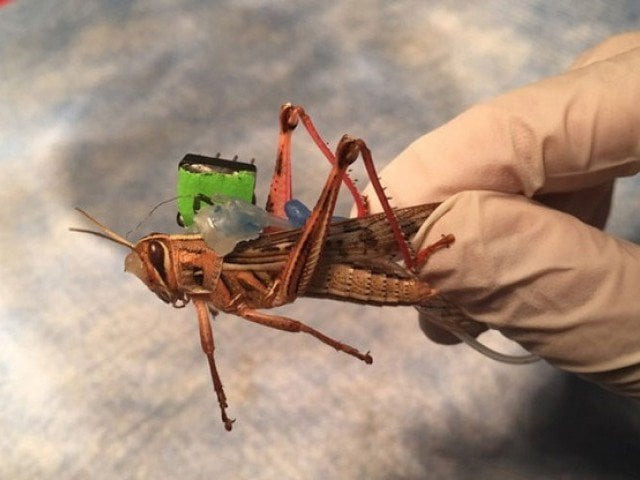Coping with the locust assault
Pakistan alone is expected to incur losses of around $4 billion due to locust-caused destruction

PHOTO: EXPRESS/FILE
The UN has labeled this unfolding locust scourge as being of biblical proportions. The Food and Agriculture Organization (FAO) has warned of billions of dollars of losses to crops and a major exacerbation of long-term food shortages in already food and water stressed poor countries.
This current infestation is being linked to climate changing weather patterns such as an extended cyclone season over the past few years in the Arabian Peninsula which allowed three generations of unprecedented locust breeding. The spread of these swarms went undetected and unmanaged as it spread into South Asia and East Africa, till it became a much bigger problem.
The Pakistani government declared a national emergency earlier this year after being caught off guard by the locust swarms which began arriving from the UAE in mid-2019 to destroy this past winter’s crops. The threat of another locust flare-up came subsequently as the current summer crops of cotton, sugarcane and rice were being sown, and fruit and vegetables were being harvested. FAO’s forecasts predict that India and Pakistan will see several waves of the spring-bred swarms over these coming weeks, with additional swarms from East Africa in early July.
Pakistan alone is expected to incur losses of around $4 billion due to locust-caused destruction, which will be devastating for our economy already in dire straits.
India is also becoming increasingly nervous as locust swarms move eastward and is proposing a trilateral response in partnership with Iran. Besides apparently suggesting coordinating locust control operations along the Indo-Pak border, India has apparently offered supplies of malathion, a pesticide, to Pakistan. Iran has already welcomed the Indian offer of pesticides to control desert locusts in South Khorasan and Sistan-Baluchestan, which borders Pakistan.
While India’s direct cooperation with Pakistan may remain limited due to escalated tensions over Kashmir, Pakistan is working with the FAO’s Commission for Controlling the Desert Locust, which includes Afghanistan, India, Iran and Pakistan. China is also assisting by providing malathion and high-efficiency remote sprayers.
The FAO recommends use of pesticides over controlled areas while the locust is still breeding. In Pakistan, the opportunity of targeted use of pesticides seems less relevant as locust swarms have already spread across much of Balochistan, Punjab and Sindh.
Wider pesticide use implies ecological damage and health concerns. Pesticide also makes locust toxic. Eating locust is not haram, and people in Middle Eastern countries have been eating them. The insects can also be used as additional protein intake in animal feed. Okara district has apparently begun piloting a project to turn locust into high-protein chicken feed.
It is interesting to note how China has deployed ducks in the past in places like Xinjiang to help tackle locusts. Environmentalists are also pointing to the possibility of using indigenous natural pesticides such as neem tree oil to deter swarms from devouring crops.
On the other hand, countries like Kazakhstan have been supported by donors to use satellite and climate data to undertake large-scale mapping of the conditions to better predict locust outbreaks. Besides monitoring and surveillance for advance warning, research into altering cropping patterns and soil management to reduce carbohydrate content in crops like millet has shown promising results, and merits attention.
Creating an integrated strategy to contend with the locust scourge will take time but one hopes that some of the above strategies can be applied in time to help lessen the damage by incoming locust swarms.
Published in The Express Tribune, June 6th, 2020.
Like Opinion & Editorial on Facebook, follow @ETOpEd on Twitter to receive all updates on all our daily pieces.














COMMENTS
Comments are moderated and generally will be posted if they are on-topic and not abusive.
For more information, please see our Comments FAQ